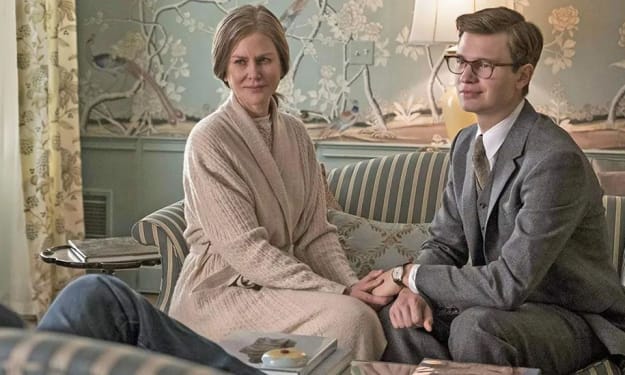Why Inglourious Basterds is Quentin Tarantino’s masterpiece
The director is winning raves for his new film Once Upon a Time… in Hollywood, but, 10 years on, it’s this World War Two fantasy that is his most perfectly realised work

A young woman’s face appears on a movie screen, gigantic in close-up and starkly black and white, interrupting a Nazi propaganda movie. In a Paris theatre, where Hitler and other Nazi officials are attending the German film’s premiere, the haunting screen image of Shosanna Dreyfus (Melanie Laurent) tells them, “You are all going to die.” She has set a fire that will kill them, unaware that her plot overlaps with a US-and-British military operation to blow up the theatre. The entire exhilarating sequence – from the film within the film, to Shosanna’s fire, the soldiers’ bloody shootout, and the wish-fulfillment of Hitler’s death – unites the strands of Quentin Tarantino’s underrated masterpiece, Inglourious Basterds, released 10 years ago this month.
Right now critics and audiences are focused on Tarantino’s latest film, Once Upon a Time... in Hollywood. With its colourful evocation of 1960s show business, Leonardo DiCaprio and Brad Pitt gleefully playing a fading actor and his stunt double, and a revised version of the Manson murders, the new film is hugely entertaining and clever, if a bit over-long and indulgent.
Story continues below
Inglourious Basterds set off a new pattern in Tarantino’s career: rewriting the past
But a decade on, Basterds seems better and timelier than ever, as it confidently moves from an opening episode rooted in classical realism (a rarity for Tarantino) to an ending that is pure movie fantasy (much more typical). It is not as brashly startling as Reservoir Dogs, his first film, or as influential as the violent, funny, time-looping Pulp Fiction. But with its swoop through history, and its flawless ability to be at once a war movie and a homage to war movies, a comedy and a drama, Basterds is his most ambitious, most perfectly realised work.

Basterds also set off an audacious new pattern in Tarantino’s career: rewriting the past. In Django Unchained (2012), set two years before the start of the Civil War, a former slave blows up a slave-owner’s house and rescues his own wife, grabbing freedom instead of waiting for history to find him, and Once Upon a Time... in Hollywood also rewrites the story it's based on. We may not know why Tarantino has become so obsessed with alternate versions of previous eras, but we can see the effect. His revisionist histories recast victims as heroes, often linking that heroism to the power of movies.
A director for our times
These fanciful revisions speak to the current moment of fake news and political polarisation. The difference is, Tarantino is not trying to dupe his audiences. He knows that movies can’t change the past, but they can alter how we see it. He is throwing a new light on the present by depicting more just societies that might have been.
Inglourious Basterds works as fantasy – killing Hitler is on everyone’s list of what to do if you could time travel – but its accomplishment as cinema is even more dazzling. The film signals from the start that it is a fiction and an homage to World War Two movies. The theme music, The Green Leaves of Summer, is from the 1960 film The Alamo. The music doesn’t evoke history but war-movie history, and you don’t have to be able to identify that melody to feel how effectively it sets a retro tone.
The film contains one of the most realistic, suspenseful sequences Tarantino has ever created
In another old-fashioned touch, the film is divided into chapter headings, with the first reading, “Once upon a time... in Nazi occupied France.” The title Once Upon a Time ... in Hollywood is an obvious tribute to Sergio Leone’s epics Once Upon a Time in the West and Once Upon a Time in America. But Tarantino used the trope 10 years ago just as he does in the new film, to highlight the fairy-tale quality of his stories.
In a brilliant tonal shift, though, those fictional markers in Basterds precede one of the most realistic, suspenseful sequences Tarantino has ever created, as a French farm family is visited by Nazis who suspect the farmer is hiding Jews. The Nazi officer, Hans Landa, has a flair for the dramatic, allowing Christoph Waltz to play him as slightly larger than life. But the sequence in which Landa calmly sits at the kitchen table interrogating the farmer has the taut realism of Steven Spielberg’s World War Two films.

Tarantino creates excruciating tension as the men talk and the camera pans down to look through the floorboards of the farmhouse, where we see a family hiding, trembling in fear below Landa’s feet. When the farmer gives them up, Nazi soldiers spray the floor with bullets. Only Shosanna escapes.
There are many legitimate questions about Tarantino’s treatment of women, which can range from brutality (Kill Bill) to neglect (Reservoir Dogs) to using them as a sidelight (Pulp Fiction). But Shosanna is undoubtedly the heroine of Inglourious Basterds, smart enough to devise a plan to destroy the Nazis, brave enough to carry out a suicide mission.
Brad Pitt chews on his Southern accent as he announces that he wants “one hunnerd Nat-zi scalps”
Throughout the film, Tarantino meticulously balances naturalism and caricature (with two minor, cartoonish exceptions: the buffoonish Hitler and Mike Myers’ distracting, misfiring performance as a cloying British officer.) A band of Jewish-American soldiers, known as the Basterds, have infiltrated occupied France, led by Lt Aldo Raine (Brad Pitt). While Laurent plays her heroic Resistance fighter so realistically that we can see the fear beneath her bravery, the Basterds are deliberately over-the-top, scalping Nazis and carving swastikas on their foreheads.
Pitt chews on his Southern accent as he announces that he wants “one hunnerd Nat-zi scalps”. Raine is believable only in the way characters in old war movies are, but that approach resonates. And the Basterds are a source of dark wit. Recruiting a one-time German soldier who has turned against his own leaders, Raine says, “We’re a big fan of your work when it comes to killing Nazis.”
Cinema to the rescue
Unlike most war movies, though, Basterds heads toward an ending in which cinema can save the world. All Tarantino’s works are infused with a love of film, but never as visually eloquent or as deeply woven into the story as it is here. Shosanna has escaped to Paris, where she runs a movie theatre. One especially elegant scene is set in its empty lobby. Shosanna’s dark-blue trousers and shirt, the shadowy lighting, and even the way Laurent places her hand on her chin evokes (deliberately or not) Edward Hopper’s New York Movie, a 1939 painting of a lonely usherette in a grand movie house.
Shosanna devises her lethal plan after she is pressured to present the propaganda film, Nation’s Pride, about a Nazi sniper, Frederick Zoller (Daniel Bruhl). Nation’s Pride is an invention of Tarantino's, but he laces in references to real-world cinema, from a movie starring Leni Riefenstahl that Shosanna’s theatre plays to the appearance of director Emil Jannings, who turns up at the Nation’s Pride premiere. When Zoller tells Shosanna he is surprised to see a director’s name on the marquee, she snaps, “I’m French. We respect directors in our country,” adding a bit more wit and a real-life meta-reference from Tarantino.

It seems close to the director’s heart that Shosanna’s plan involves setting a pile of volatile 35-mm nitrate film on fire. A voiceover by Samuel L Jackson even explains how flammable that old film was, with a mock public-service announcement visualising it. Movies are also life savers in Once Upon a Time... in Hollywood. Pitt’s character calls on his expertise as a stuntman, and DiCaprio uses a flamethrower from one of his action movies to thwart the Manson family. You never know when movie knowledge will come in handy.
A nerve-shredding set piece
And you never know when it won’t be enough. In Basterds, Michael Fassbender plays Lt Archie Hickox, a professorial British film critic turned soldier, a character Tarantino admires for his daring, and gently mocks for his effete works on cinema. In a plummy accent, Hickox describes one of his books as “a subtextual film criticism study of the work of German director GW Pabst,” which is many more words than he needs. He joins the plan to blow up the theatre, code-named Operation Kino (or Film), and lands at the centre of another taut set piece, one of the highlights of Inglourious Basterds.
Disguised as a Nazi officer, Hickox goes to meet a German actress with the fabulous name Bridget von Hammersmark (Diane Kruger), working as an undercover agent for the Allies. They find themselves in a bar full of genuine Nazis, and as they drink and play a card game, the tension builds along with the Germans’ suspicions of Hickox’s unlikely accent. Despite his expertise in German cinema, though, the film critic’s cultural knowledge lets him down, and he gives himself away by signalling for drinks with a gesture Germans wouldn’t use, a small touch that leads to the kind of fast-paced, perfectly choreographed, merciless bloodbath Tarantino is known for.
By the time the Basterds arrive at the theatre to carry out Operation Kino, the film has moved far from reality. When Landa reaches into his pocket, pulls out the shoe Bridget lost at the shootout and places it on her foot, Tarantino even reverses a fairy tale. This Cinderella moment confirms her duplicity and seals her death.
Inglourious Basterds does not ask us to deny reality. It uses cinema to expand our imaginations
The big action scene at the theatre is as dramatic and as brutally satisfying as any Tarantino has made. Shosanna’s giant image goes up in flames, many Nazis are killed, and one of the Basterds repeatedly shoots Hitler, so there is no doubt he is dead. We believe in that first, terrifying farmhouse sequence, but even in an age of so-called false facts no one can think Operation Kino happened. Inglourious Basterds does not ask us to deny reality. It uses cinema to expand our imaginations and to see, however briefly, what heroism can do. Like Tarantino’s other revisionist films, it asks us to think.
Even after killing Hitler, Tarantino isn’t quite done. At the end, Raine carves another swastika, this time on Landa’s forehead. He has been working to improve his artistry at that. This time he looks at his handiwork and tells one of his men, “You know something, Utivich? I think this just might be my masterpiece.” Could that be the director commenting on his own work? Well, no one has ever called Tarantino modest.
About the Creator
Many A-Sun
Where your interests lie, that's where your abilities lie.






Comments
There are no comments for this story
Be the first to respond and start the conversation.